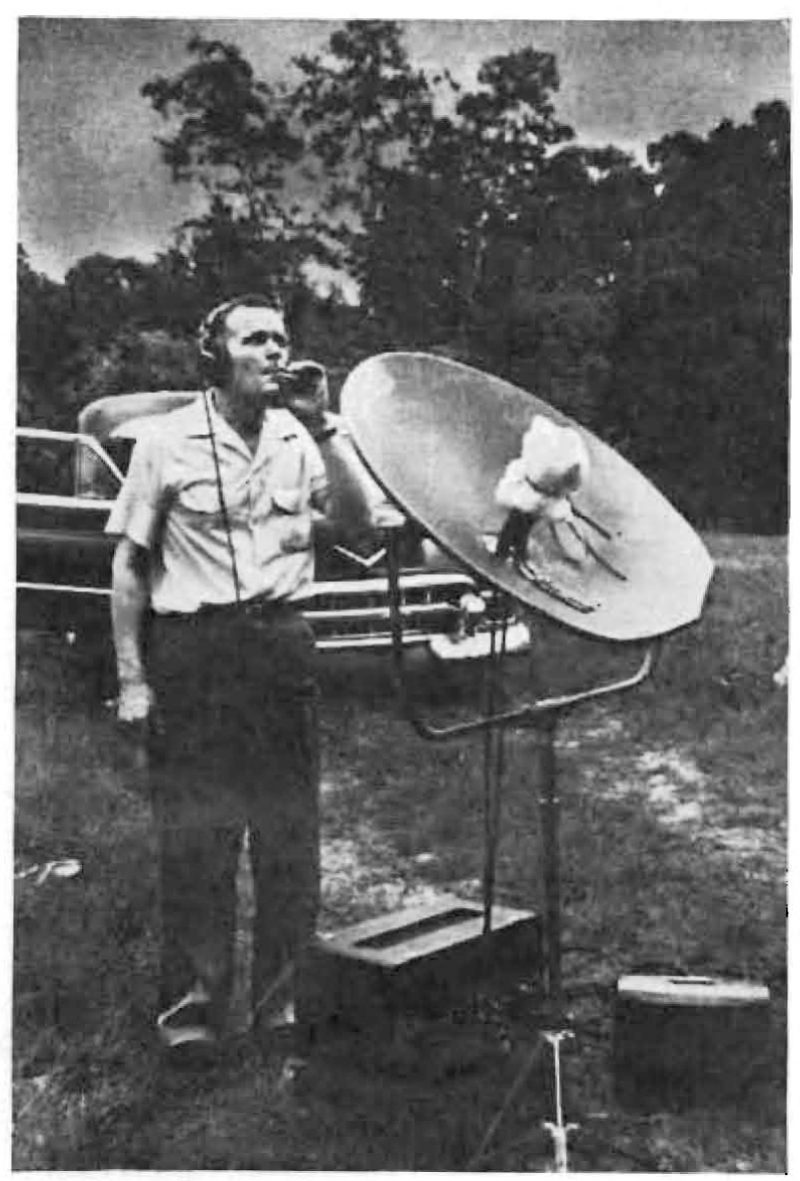In the spring of 1952, as a generation of young men boosted by the GI Bill began buying new homes, and new big-finned cars to park outside them, the last great era of American capitalism was getting under way. The American business of recording and selling sounds was also changing. In 1952, teen fans of pop music, like “ethnic” fans of country western and rhythm and blues, were still wearing out 78-rpm singles, or lightweight 45s, on their barroom’s jukeboxes or bedroom consoles. But a new vinyl format—the 33⅓ Long-Play record—had begun appearing in stores, and a new consumer audio-equipment market was on the rise, aimed at getting those prospering veterans to spend their disposable dollars on home “hi-fis.” These developments didn’t just transform the soundscape of the United States; the rise of the LP shaped the culture and politics of hundreds of nations just then transforming themselves from colonies of old Europe into new member states of the U.N. In March of that year, the New York Times published a column (under the headline HIGH FIDELITY—DOES IT EXIST?) that laid out a new philosophy of sound for a hi-fi world.
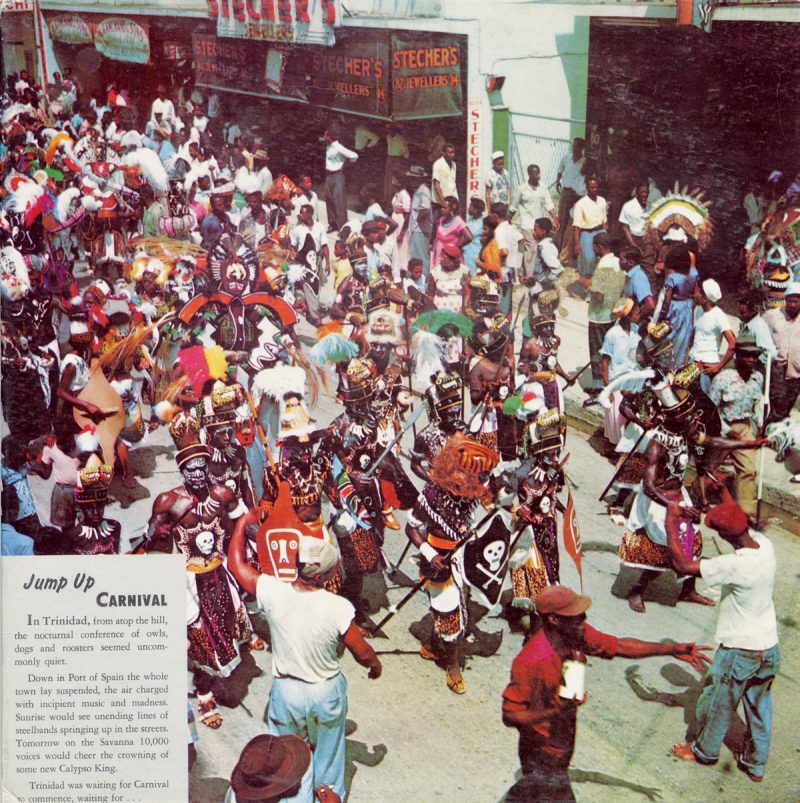
The column’s author, though hardly a household name today, was as instrumental as his better-known contemporaries were in shaping the LP age. Emory Cook began his Times column lamenting the fact that the phrase high-fidelity, which was at the time plastered onto audio equipment and records of wide-ranging quality, had become “a banal expression.” In the early ’50s, advertisers were selling everything from “high-fidelity” lipstick to “high-fidelity” Dacron shirts. Cook counseled his readers that anyone could become an expert at recognizing “the fearful discrepancy between reproduced music and music.” To do so, he suggested, they need only go to a concert:
Listen there for the velvety-smooth complexion of the overtones of the string section; hear the abrupt rubbery sound of the rosin on the soloist’s bow; commit to memory the make-up of the piano note, especially the “attack,” or beginning of each note. Feel the physical sensation of bass in pitch, not boom. Listen, if you can, less for enjoyment this time, and more for memory—and for days afterward you will be an expert judge of high fidelity.
Cook bewailed the fact that “modern studios have evolved to the point where they are unnatural places in which to originate sounds.” He contended that recording music in an acoustically “flat” studio—a sound-absorbent space free from the world’s overtones and echoes—was a practice to which all music lovers should object. “We listen to [music] for its emotional or spiritual impact,” he wrote; “and, to be effective in that direction, the reproduction must lead us back in fancy to some concert hall or auditorium—or night spot—where once we heard it alive and in the flesh.” A high-fidelity recording, in other words, should capture not merely a sound itself but the context of its airing in the world.
Since Thomas Edison’s invention of the phonograph, in 1877, many of Edison’s followers had pursued a recording ideal the obverse of Cook’s—the idea, as Edison put it, that “I can record the voices better than any person in a theater can hear them”: that the aim of recording a voice or viola should be to capture its “pure tones,” without earthly echoes or extraneous sound. Cook was hardly the first to reject this ideal: the debate over whether one could (or should) “record the room as much as the music” had enflamed audio engineers since the advent of electronic recording. In the postwar years, true-blue Edisonians may have been on the wane, but there remained plenty of enthusiasts for the foam-walled “dead rooms” they favored. Cook’s Times column was notable not merely for the depth of its animus against those engineers (“It’s like dying, being in a dead room”), but for heralding an emergent consensus among high-fidelity enthusiasts that sound and space were intrinsically linked: that a great recording could make of a listener’s living room another place and time.
During the following half decade, Cook came to be recognized as both the leader and primary symbol of the high-fidelity craze. That trend—which attended the large-scale movement of America’s populace from city apartments to new suburban homes, where, as the editor of High Fidelity magazine put it, “the living room was establishing… itself as the center of American recreational life”—was built around Cook’s ideas. And by the end of the 1950s, interest in high fidelity would forge the economies of scale needed to make high-end audio equipment a part of many Americans’ lives, midwifing the emergence of a new social type—the audiophile—and fostering the advent of “live” recording and stereophonic sound. Cook shaped these trends as a developer of high-end audio equipment, and then as a maker of records—which captured sounds ranging from choral singing to bullfrogs croaking in a pond—to evince his ideas about how best to use it. But perhaps the most interesting and persistent aspect of Cook’s influence is the resonance his ideas—and records—found in another place entirely.
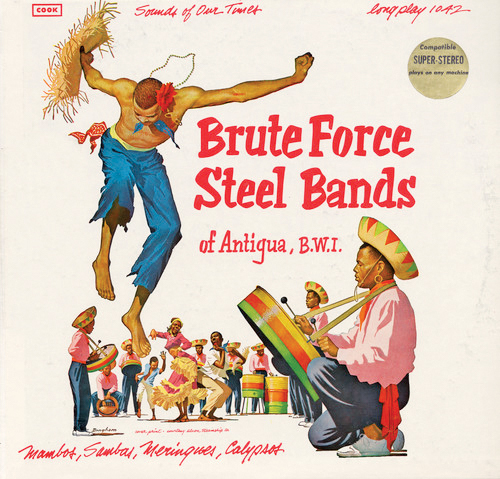
Cook spent the early 1940s aboard U.S. warships, working as a radar engineer, where he honed his skill with electronics. The experience broadened his awareness of a world beyond America’s shores, and by the late ’50s Cook’s sonic passions led him far afield of his Connecticut lab—most notably, to the Caribbean island of Trinidad. Entranced by the challenge of capturing Trinidad’s great steel bands on record, Cook also fell for the buoyant sounds and intricate wordplay of the island’s other great music, calypso. Impassioned by this aural world, Cook set up a company in Port of Spain, Trinidad’s capital, to record and press records of the music Trinidadians played during their yearly carnival celebrations, creating the definitive records of those traditions just as Trinidad was gaining national independence. His records played a crucial role in cementing those traditions’ touchstone status in the island’s culture, proving the power not only of Cook’s ideas about how to record the world but how vinyl LPs could help shape it.
*
Born in 1913, Cook was raised a pampered only child in upstate New York. “Mine was a case of an early trauma,” he told the New Yorker in 1956, when the magazine ran a two-part profile on the hi-fi king. “I never wanted to grow up to be a baseball player or a trolley-car conductor. Right from the start, I knew that whatever I was going to do would have to be done indoors.” Like many introverted boys born to the shortwave era, Cook spent hours assembling and disassembling radio sets. His parents—unimpressed when he emerged from their cellar with an electronic burglar alarm he’d made for them—didn’t encourage his radio-head pursuits, which only deepened their allure.
His affinity for engineering didn’t extend to the classroom. Cook’s main achievement at M.I.T.—from which he flunked out after a year—was to put together, from spare parts procured around Boston, what he felt to be the finest radio and phonograph unit in the city. Cut loose from school, Cook enlisted in the Army Air Corps. His two-year hitch as a private at Wheeler Field, Hawaii, commenced what would become an important long-term association with the U.S. Department of Defense; other than that, the two years passed pretty quietly. In 1935, Cook returned to college, this time at Cornell. There he landed a job helping to operate a radio transmitter at WESG, in Ithaca. The job required him to keep an ear cocked to WESG’s wavelength from seven in the morning until nine at night, listening for signs that its signal had strayed from its allotted frequency. On his second college try, Cook was able to wed his extracurricular passions to passing grades. Spending nearly all his waking hours outside class on a cot at the station, he did his calculus problem-sets to the steady hum and murmur of its programs. The monitoring job fed his interest in what he later called “the world of the ear.” It also provided the means for him to nurture one of his most renowned traits among his future acolytes: his famously sensitive ears.
Cook’s fabled sense of hearing had been apparent from his boyhood. It had led his parents—who often had to repeat what they were telling him—to grow concerned that their son was going deaf. “The trouble,” he said, “is my ear is so damn selective that it may pick out any one of a number of sounds around me instead of the sound I ought to be listening to. Half the time, I have to read lips. If I take a hearing test, I’m apt to hear the air brakes of a bus down in the street, and not the ticking of the watch that the doctor is gradually drawing farther and farther away from me.” As an audio engineer intent on capturing spaces whole cloth, this skill was a great boon. Cook would go about creating what audiophiles described later as “presence” precisely by including “foreign sounds” on his records, pace Edison, giving listeners a realistic sense of where the sounds were made, along with their spatial relations to one another. “Memories are motionless,” the French philosopher Gaston Bachelard wrote in The Poetics of Space, “and the more securely fixed they are in space, the sounder they are.” Emory Cook, for whom sound could be “an escape into the wild blue,” leading listeners back to where they first heard them, certainly agreed.
After Cornell, Cook worked briefly for CBS as a studio technician, and then took a job with Western Electric; after Pearl Harbor, he was assigned to the company’s Audio Engineer Force. He spent the war hopping from destroyer to destroyer, tasked with convincing navy gunners to stop relying on traditional range finders and find their targets by feeding mathematical data into new computerized radars instead. Back home in Connecticut, with a navy commendation for his service and a new wife and baby to support, Cook was determined not to earn his living as a corporate flunky. During rare weekends home from the war, Cook had experimented with various electronic recording devices, convinced he could improve on their performance. He asked some audio engineer friends about why even the best devices couldn’t be relied upon to perform at a consistently satisfying level; their responses left him nonplussed. “My friends didn’t seem to grasp the fact that the reproduction of sound must be a blend of two sciences—engineering and acoustics,” he said. “Take the recording of an orchestra, for instance. I’d found that it was perfectly possible to reproduce the music on a record so that it was nearly perfect from the technical point of view—very little distortion and a wide frequency spectrum—but it still sounded lousy acoustically, as if the orchestra had been jammed into a telephone booth.”
Cook set to work in his garage. He began experimenting with a high-end oscillator—the synthesizer’s precursor, a device that produces tones of any desired frequency—to see if he could work out a way to record tones with frequencies ranging up to twenty thousand cycles per second, and press them on vinyl with a new kind of precision-cutting head he invented for the job. To most humans’ ears, tones at 20 kc are inaudible; Cook claimed he could hear them. To try out his techniques, he made sample records of a piano recital held in an echoey stone-walled cathedral. Bringing these records to the 1949 Audio Fair in New York, Cook posted a sign above his table with a simple message: 20 kc records. One fair attendee recalled: “It was as if an exhibitor at an aviation show were to hang out a sign reading, ‘3000-Mile-per-Hour Plane’.” Skeptics contended that it was only in joining those tones to lower-frequency ones that people could hear them. But no matter: hundreds crowded Cook’s suite to hear sounds never before pressed on wax. His road to solvency was plain. He began his record label, Sounds of Our Times, the next year.
Cook’s first commercial release was a recording of rare Christmas music boxes procured from a pair of New Jersey collectors; his second, Kilts on Parade, was waxed by a group of bagpipers he found by ringing up a Gaelic social society in the Manhattan phone book. Both these efforts were snapped up by high-fidelity enthusiasts. Cook’s third record, however, hit real pay dirt. Rail Dynamics was recorded along the New York Central rail line between Peekskill and Penn Station. Working mostly at night, to avoid the polluting sounds of passing cars and waking life, Cook had dodged the trailing eyes of station agents and skulked beneath trestles, hanging far out of train windows with his microphone in hand. The record was the hit of the 1951 Audio Fair. “For three days, the hall outside his exhibit room in the Hotel New Yorker was jammed solid with fevered audiomaniacs,” reported High Fidelity magazine, “blenching with ecstasy at the tremendous whooshes and roars of Cook’s locomotives.”
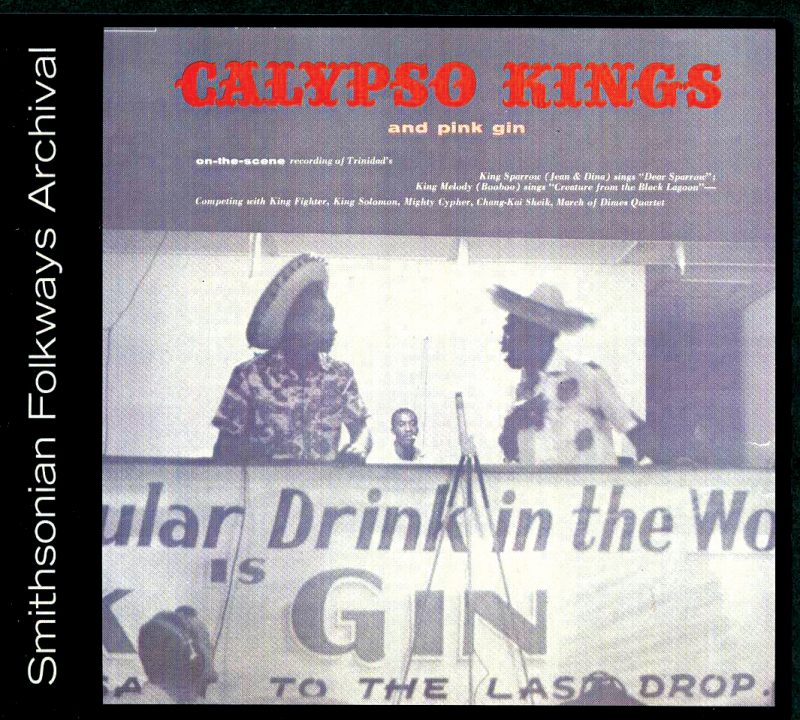
By the time Cook’s Times manifesto appeared, Rail Dynamics—which would sell one hundred thousand copies—was on its way to becoming the de facto “demo” record for salesmen of hi-fi audio equipment nationwide. Sales of high-fidelity stereos quadrupled over the next four years. “His records are as responsible as any other single factor for making converts,” John Conly, the editor of High Fidelity, said of Cook’s label. “Listening to familiar sounds like puffing locomotives and chiming bell buoys, instead of symphony orchestras, makes it easier for the large part of the public that isn’t very musically inclined to realize what can be achieved with sound now that we have the equipment for it.” Cultivating his reputation as both an intrepid sound-finder and a great tech-y showman, Cook arrived at the 1954 Audio Fair with an LP of maritime sounds featuring a close-range capture of the “all aboard” bass-horn blast of the Queen Mary. Teaming with his Connecticut neighbor Rudy Bozak, a famous speaker engineer, Cook played his Voice of the Sea LP over a pair of man-sized Bozak speakers containing eight woofers apiece. The resulting din so perturbed guests and neighbors of the Hotel New Yorker that the fair’s hosts threatened to shut him down. “I suspect that if I were to ask my readers for a list of their twenty favorite records,” said Conly, “nearly all of them would include at least five Cook releases.”
*
In the years after he hit with Rail Dynamics, Cook’s catalog grew to include recordings of bullfrogs around a Connecticut pond, the buzzing of horseflies, summer thunder recorded atop Mount Washington during a raging tempest. His small outfit—run out of a modest tract home in Stamford, Connecticut, with a staff of less than thirty and no recording artists to pay—became one of the best-selling (and most profitable) record labels in the country. “Train whistles, bell buoys, sea waves!” one industry colleague remarked. “That’s Emory Cook’s biggest invention—the royalty-free record!”
Having entered the business shortly after the advent of the LP, Cook was ideally placed to shape how the industry would capitalize on the new format allowing upward of twenty minutes of sound per side.
Soon enough, the rock album—a linked suite of songs organized around a theme (or not)—would become a cultural touchstone for young people everywhere, an accessory to figuring out who they were and how best to piss off their parents. But at the LP’s birth, common wisdom and sales reports both agreed that the new LP market was “adult”—focused, that is, on the denizens of new suburbs seeking musical accompaniment to their cocktail parties or cuddly evenings by the fire.
At first, this market was dominated by Broadway cast recordings like South Pacific—which remained America’s top-selling LP from 1949 to 1951. Soon, cast recordings were joined by records explicitly aimed at providing sonic wallpaper for those plush “dens” materializing across the suburbs. Paul Weston launched an eponymous genre with his 1953 hit LP Mood Music, and the TV comedian Jackie Gleason scored that year’s top album with Music for Lovers Only; he followed it up the next year with the top-sellers Music, Martinis and Memories and Music to Make You Misty. The aim of mood music was to forge a particular atmosphere in people’s parlors—cozy, nostalgic, sexy.
Its close cousin, “exotica,” aimed to bring the world’s remote places into those same parlors. The great purveyor of exotica, the Hollywood bandleader Les Baxter, summarized his genre’s appeal in the liner notes to his 1951 LP Ritual of the Savage. “Do the mysteries of native rituals intrigue you?” they asked during a year in which his Voice of the Xtabay, recorded with Yma Sumac’s Incan orchestra, became the year’s number-three seller. “Does the haunting beat of savage drums fascinate you?… This original and exotic music by Les Baxter was conceived by blending his creative ideas with the ritualistic melodies and seductive rhythms of the natives of distant jungles and tropical ports to capture all the color and fervor so expressive of the emotions of these people.” Though Cook never released anything approaching the purple pastiche of sounds such prose described, his ideas and records doubtless influenced exotica’s sonic palate, and its guiding concept: to forge a fully realized aural world over the arc of a whole LP.
With Sounds of Our Times shipping upward of three hundred thousand royalty-free LPs a year, Cook had the necessary funds to continue nurturing his passion for gadgetry and audio research. In 1953, he launched his patented “binaural” record series, a doomed if inspired experiment to make stereo records by placing two microphones at ears’ width apart. The resulting records—the first stereophonic discs sold to consumers—were imprinted with two parallel grooves corresponding to a listener’s two “ears,” and were playable only on Cook’s patented Rek-O-Kut turntable (a $165 gadget in 1953). More widely embraced was “microfusion,” an innovative method of fabricating records from powdered rather than solid vinyl that was at once cheaper and less given to the “crackle and pop” surface-corruptions endemic to early LPs. Refusing to hire a publicist for his label, Cook also saved money—and indulged his writerly whims—by composing all his records’ liner copy himself, and communed with his public via a newsletter called the Audio Bucket that featured dispatches from his travels and an “agony column,” where he commiserated with his followers over sonic atrocities and crackly grooves.
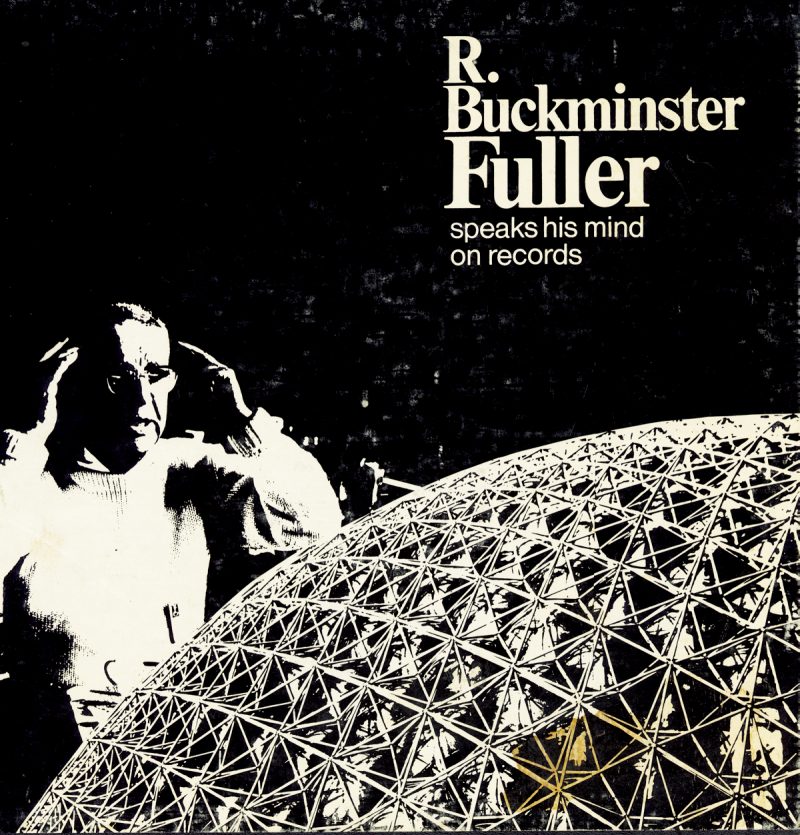
A suburban lover of machines, wearing his two Dacron shirts on alternating days, Emory Cook fit the audiophile stereotype he came to represent in the press. His relation to sound was nothing if not obsessive. But Cook was no misanthrope, and wasn’t immune to the charms of a great performer. When he did decide to record people instead of trains or insects, he had really fine taste. Venturing where few mainstream A&R executives were willing to go, he traveled to New Orleans to record the great jazz singer Lizzie Miles in her “natural habitat” (recording her away from Bourbon Street would be “like trying to hold a heartwarming conversation in a dentist’s chair,” Cook wrote). “In this business,” Cook wrote in his notes to Miles’s Moans and Blues, “after all those years of knockabout and trouble, either you turn bitter and disappear, or you ripen into a remarkable personality.” Cook’s love of “presence” wasn’t unconnected to his interest in the histories and cultures that forged the sounds he loved.
His catalog grew to include a number of records—from an old-style guitarist fingerpicking the blues to an old codger recounting tales of Appalachia’s caves—that would have fit right in on Moe Asch’s Folkways, or one of the other labels driven, in those years, by reviving interest in old, weird America. But Cook’s southerly explorations didn’t stop at New Orleans. “Alta Fidelidad is becoming very popular in some Central and South American countries,” ran a portent-filled 1955 notice in Audio Bucket, “presaging a new level of interchange with the Spanish culture.” Soon enough, Cook’s “Road Recordings” catalog grew to include an LP of that marimba ensemble in Oaxaca; another of the famed Haitian percussionist Tiroro, playing his drums in Port-au-Prince; and then, most fatefully, an acoustical tour of sounds captured on a song-collecting cruise from Haiti to Jamaica, Trinidad, and Mexico, that Cook dubbed Caribeana.
Cook began looking for a contact to help him record steel bands, first among his West Indian acquaintances in New York, and then in the islands themselves. He eventually found Bruce Procope, a Trinidadian lawyer who’d helped arrange for the first touring steel-band ensemble to visit England, in 1953. Striking up a correspondence with Procope, Cook expressed his hope that he might be able to record such a “’pan” group in Port of Spain. Having laid the groundwork for a visit during the early months of 1955, he arrived in Trinidad for the first time in May of that year.
*
When Cook arrived in Trinidad in 1955, the great congeries of U.S. GIs who’d arrived to build and man their naval base at Point Cumana had dwindled from their wartime high of twenty-five thousand to a mere thousand-odd soldiers. But Trinidad’s capital was still a town whose culture and mores were shaped by American sailors who sought their pleasure in its brothels and bars. “Rum and Coca-Cola,” a calypso by local songsmith Lord Invader, which was hugely popular during the war, described the resulting dynamic: “They buy rum and Coca-Cola, / go down Point Cumana. / Both mother and daughter / working for the Yankee dollar.” The comedian Morey Amsterdam brought the song home to the U.S. after he visited Trinidad on a U.S.O. trip in 1944, and it became a huge hit for the Andrews Sisters the following year. The Sisters’ chirpy version of the song, released just as millions of American servicepeople were returning to the States from overseas, sold an estimated five million copies worldwide. The cultural borrowing went in the other direction, too: zoot suits and jazz, in the war’s wake, became hugely popular in Port of Spain. Whatever the Yankee influence on its culture, though, Trinidad in 1955 was still a British colony—albeit a British colony whose long-building movement to win its freedom was just then reaching its endgame. This historical drama—and the providential timing with which Cook strode into it, bearing his tape recorders and hi-fi philosophy—
defined the politics of an island whose torturous history, and diverse people’s struggles to form themselves into a nation, was as complex as any in the once-colonized world.
After Columbus claimed Trinidad for Spain, in 1498, the island spent most of its colonial history as a thinly settled backwater. In order to expand the island’s European population, Madrid adopted a policy of offering land grants to French Catholic planters. As a result, by the late eighteenth century, Trinidad had become a Spanish territory whose population and culture were mostly French. Trinidad was seized by England in 1797, but the French planters remained, establishing the tradition of a Mardi Gras–style carnival on the island. After slavery’s abolition, in 1838, the island’s cultural history was further complicated by the arrival of thousands of indentured workers from Bombay and Uttar Pradesh, imported by the English to replace their African slaves in the canefields.
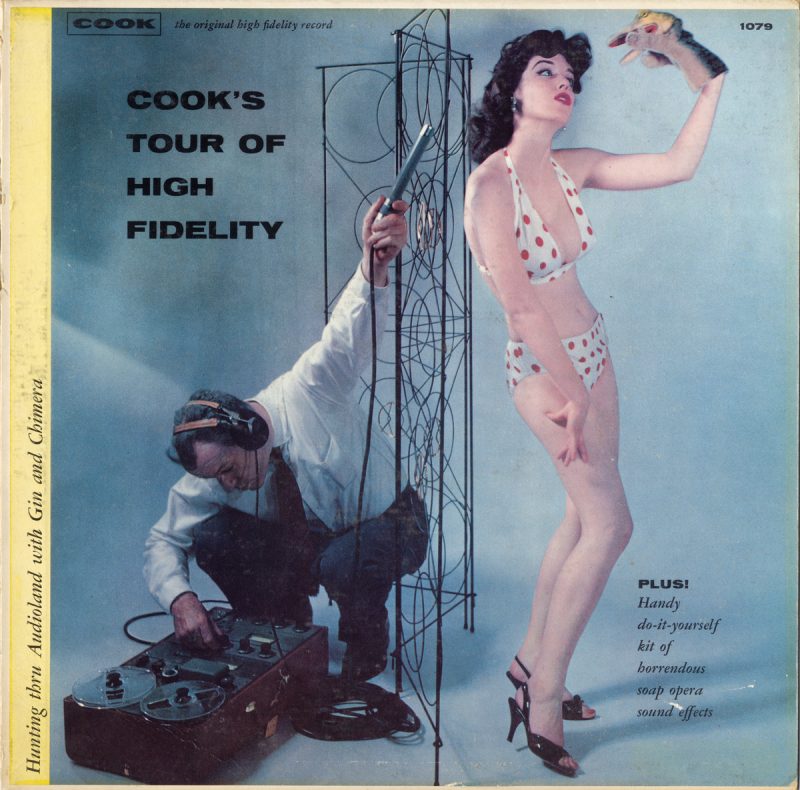
Slaves and their children were banned by their masters from playing stretched-skin drums, so they made a music called “tamboo bamboo” by thunking large-bore lengths of bamboo against the ground. During a spate of labor unrest in the 1930s, colonial police decided that groups of working-class men wielding bamboo rods signified a threat to order, and so tamboo bamboo was banned, too. Carnival musicians, forced to change up again, turned to garbage cans and biscuit tins—and then, after the U.S. navy began turning Trinidad’s northwest corner into a major base of Caribbean operations, in 1942, to the fifty-five-gallon drums in which they stored their fuel. When an inspired coterie of locals discovered that those empty drums’ bottoms could be pounded into shape and made to emit a full range of pleasing tones, the only acoustic instrument invented in the twentieth century (as Trinidadians like to brag) was born. Steel drums’ great coming-out party was the impromptu carnival that hailed V.E. Day on Port of Spain’s streets. Over the next decade, leading groups like Invaders and Desperadoes evolved “’pan” by introducing bouncing harmonic riffs, forging a new symphonic idiom whose sophistication and drive echoed the massed effects of Ellingtonian swing.
Arriving in a city where, by 1955, well over one hundred steel bands were honing their craft in “panyards” around the city, Cook thrilled to what he heard. He also found that recording those panyards’ denizens wasn’t a simple job. Musical theft, including the Andrews Sisters’ cover of Lord Invader, stayed fresh in locals’ minds. A Yankee music executive, wielding dollars or no, wasn’t a welcome visitor in Port of Spain music circles. One group and then another rebuffed Cook’s advances, claiming to have signed exclusive contracts elsewhere. Bruce Procope, who at the time was trying to clear up some of the chaos by founding a Performing Artists Union, counseled Cook that his best bet, this first trip, might be to record a steel band on another island instead. Small-island groups who’d adopted the form would be a simpler proposition, business-wise; with their ensembles’ size—groups contained a dozen-odd members, compared to Trinidad’s battalion-sized bands of one hundred or more—they would offer a simpler recording job. Cook took his new friend’s advice. He boarded a small plane at Trinidad’s Piarco Airport, with Procope in tow, and directed their pilot to fly north, up the Antilles toward Antigua.
Their contact in the island’s sleepy capital, St. John’s, was its retired harbor master. F. V. D. Griffith was a longtime leader of the Antigua police band and now the presiding poo-bah of the thriving steel-band scene on an island where, Cook later recalled, “the only local entertainment is a single cinema, and the incentive to create music is strong, since there is more leisure time, and less to do with it than in Port of Spain.” On Antigua as on other small islands that looked to cosmopolitan Trinidad for their musical cues—and often hosted Trinidadian musicians on tour—local players had taken to ’pan with gusto. Griffith told Cook that three top-class groups, the Brute Force, the Big Shell group, and Hell’s Gate ensembles, played regularly. The Brute Force group was summoned with dispatch. On the veranda of the harbormaster’s home, Cook set up the Telefunken omnidirectional microphones that had played a key role, from the early ’50s, in his mission to realistically reproduce the distance to and among the sounds his records’ listeners heard. Arranging his mics around the Brute Force’s members, the group played and sang a selection from their typically pan-Caribbean repertoire—meringues from Hispaniola; mentos and worksongs from Jamaica (including “Hold ’em Joe”—a show-stopping number for Harry Belafonte during his Broadway debut the previous year); and, of course, calypsos from Trinidad. Moving down the beach to capture a few numbers from the Big Shell Steel Band, Cook, ever lustful for “presence,” turned up the microphone after the group’s lilting rendition of a tender Cuban bolero; the tune concludes, on the LP Cook made from his Antigua sojourn, with several seconds of rhythmic surf crashing gently on the island’s sandy shore.
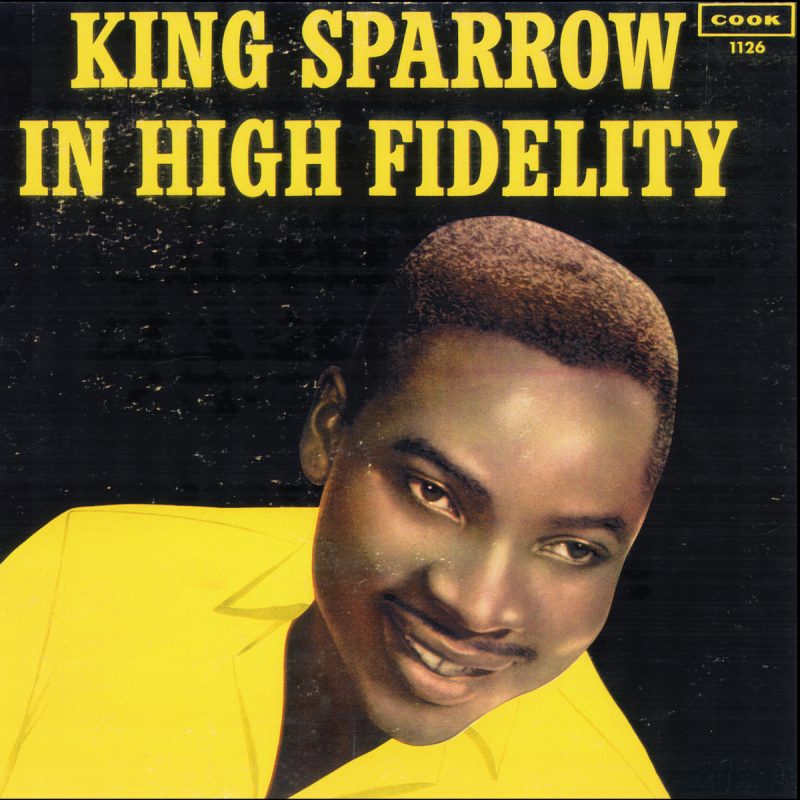
That is one plain highlight of Brute Force Steel Bands. Another, as Cook would opine in his typically piquant liner notes, was the Brute Force’s rendering of a Trinidadian classic, penned by the calypsonian King Radio in 1946; its lyrics, after the manner of “Rum and Coca-Cola,” offered a wry commentary on the sexual politics of the U.S. presence in Trinidad, and its human legacies. With the ringing tones of their steelpan evincing all the “attack” and overtones Cook could have desired, members of the Brute Force rang the charges: “Now the Americans made an invasion. / We thought it was a help to the island, / until they left the girls on vacation / [and] left the native boy to mind they children!”
Released in the U.S. in the fall of 1955, the album appeared in Port of Spain’s shops a short time later. Cook was already smitten with recording Trinidad’s music; now he became enamored with nurturing an inchoate record-buying public on the island. Deciding that Port of Spain should be the base of his Caribbean operations, Cook set to work, with Bruce Procope, to launch a new company and pressing plant there.
Their timing was propitious. With Cook’s Brute Force LP flying from shelves in Port of Spain’s music shops, local musos began to trust Cook’s skills, and with Bruce Procope on hand to look after their royalties and rights, they were soon keen to record for him. As Trinidad moved toward independence from England, the People’s National Movement party was eager to support any celebration of local culture. In 1956, just as Trinidad gained full self-rule, the new government promulgated the Pioneer Investment Act to encourage native enterprise. Cook Caribbean Records, chartered that year, would enjoy a five-year holiday on paying any tax against earnings. Cook Caribbean set up a shop in a small warehouse in downtown Port of Spain, just a few blocks from the “University of Woodford Square,” where Eric Williams, the Oxford-educated author of Capitalism and Slavery who became Trinidad’s first prime minister, addressed his followers from a park bench outside the government Red House, over which he’d soon preside. The building had an office upstairs for Cook and the firm’s accountant. On the floor below—as Bruce Procope described to me, when I tracked him down in the law office he still maintains near Cook’s old HQ—was Cook’s recording equipment, along with his patented cutting heads and microfusion machines for pressing discs from the recordings he made.
Procope is in his eighties now, and gets around in a wheelchair, but when I found him, one April day a few years ago, he was still going into his downtown office several times a week. Surrounded by velo-bound books and ancient files, nattily attired in a gray suit despite the heat, Procope lit up when I told him why I’d come to see him. “Emory was a taciturn fellow,” he said with a smile. “You never really knew what he was thinking. He didn’t say much—except when he talked about sound. Sound! That was his passion.”
*
In February of 1956, the Trinidad Guardian wrote that “Cook has done more to popularize the music of the Caribbean than any other record-maker in the U.S.” Within months, that judgment would have to be amended: Harry Belafonte’s Calypso, released that spring and climbing the U.S. charts with hits like “Day-O” and “Jamaica Farewell,” became the first LP to sell a million copies. But if Cook’s work was crucial to helping grow interest in Caribbean music stateside (or, in any case, providing a more “authentic” alternative to the Americanized borrowings of Belafonte), his records’ more crucial impact lay in their assistance in the creation of a new record-buying public in Trinidad. The year it was released, the Brute Force LP sold a record-breaking one thousand copies in Trinidad in a single week—a huge number for such a little island.
Another key music of Trinidad’s carnival tradition was also coming into its own. Calypso, whose crafters sang witty, ribald, topical songs addressing matters of keen public interest—sexual, political, or otherwise—had been around since the nineteenth century. But in 1956, calypso was coming to play a new, central role in Trinidadian culture, as the island’s rising political class came to view supporting its art as a key part of “nation building,” and calypsonians began proffering their latest tunes from stages in calypso tents and during the Calypso Monarch competition held on the Queen’s Park Savannah in Port of Spain. Emory Cook arrived in the city carrying twenty reels of magnetic tape with which to record that year’s carnival celebrations. He recorded Lord Melody, the reigning calypso king, delivering his latest number in a tent filled with the guffaws, and clinking gin-and-bitters-filled glasses, of his fans. (The song “Mama Look a Boo Boo”—a ditty about an ugly boy that played on the famously homely Lord Melody’s looks—was soon covered, to rather different effect, by the famously gorgeous Belafonte.) He was also present, with one of those rolls of tape, for the ascent of Melody’s great successor. In February 1956, Slinger Francisco, born twenty years earlier on the nearby island of Grenada, was a relative unknown. Not, however, after the performance Cook captured that month. That was when young Slinger, bearing the sobriquet “the Mighty Sparrow,” took the Calypso Monarch stage before fifteen thousand revellers. “Sparrow,” as he would become known to generations of fans from across the Caribbean, won the crown with a tune that endures as the signature calypso of Trinidad’s independence era. “Jean and Dinah,” he sang, “Rosita and Clementina! Round the corner posin’, / bet your life is something dey sellin.’” Praising Trinidad’s lovelies, and hailing the truth that their charms were now once again in reach of a young islander like him, the young singer concluded his first signature tune with a flourish:
“De Yankees gone, Sparrow take over now!”
The Yankees were on their way out; a new calypso king, standing in for Trinidad itself, was taking over. Mighty Sparrow, over ensuing years and decades, became Trinidad’s calypso king of kings (and he’s still performing, writing topical songs like “Barack the Magnificent”). Recorded by Cook, “Jean and Dinah” began it all: like a historical sequel to “Brown-Skinned Gal,” the song figured Trinidad’s birth as a nation against the presence, on its national soil, of American empire and its agents. During the half decade following the first public rendition of “Jean and Dinah,” its implicit demand that the Yankees not merely recall most of their troops but relinquish full control of their base to the new nation’s government emerged as perhaps the central political issue in Trinidadian politics (and resulted in the Yankees indeed turning the base over to Trinidadian control, in 1963).
Cook, tape rolling at the creation of calypso’s greatest modern career, had also already succeeded, with his Brute Force LP, in capturing the hard-to-record steel-band sound with unprecedented clarity and verve. For the man obsessed by “presence,” however, the gold standard of carnival recording would be to capture the steelpans playing the role they were invented to play, in the context where they mattered most. In the predawn hours of Fat Tuesday, in February 1956, Cook hit Port of Spain’s streets with his trusty Magnecorder tape recorder and omnidirectional mics. The LP Cook produced from the resulting tapes—captured on foot and from cast-iron balconies above the capital’s jangling streets—begins with murmuring voices, a rooster’s crow, a bell tower chiming six. Then come the sounds, first faint and then growing louder, of a steel band approaching—bell-like soprano pings first, then the tenor and bass tones coming clear, now a bandleader blowing his whistle and yelling commands. Some two minutes into the record’s first track, the listener has the sensation of being right in the thick of it, the sounds of voices and ringing steel all around; then, the shuffling of feet plainly audible, the band moves on, fading slowly into the ambient din—until another, soon enough, arrives to take its place. Day’s end finds Cook atop a quiet hill over the city, the nighttime sounds of crickets and birds joined to the chimes of the same bell tower we’ve heard before, now chiming twelve, marking carnival’s end and Lent’s beginning. The record’s aim, admirably met, was to convey a sense of Fat Tuesday’s complete arc, sunrise to sunset.
For Cook’s hi-fi enthusiasts up north, Jump Up Carnival represented an invitation to an exotic, tropical party. In Trinidad, it was the first quality recording of steel band in the context that had birthed the music and for which it was made. They pressed thousands of copies of the LP in Cook Caribbean’s shop, and Jump Up Carnival was an even bigger seller than Brute Force. The album was a “must-have for any Trini with a record player” and a love for their country, Procope told me. During those years, when state support for carnival was an official policy, and when dancing in the street became tantamount, for many, to participating in the nation itself, the steelpan gained its official designation, still in place today, not only as Trinidad’s national instrument but as a bona fide “national treasure.”
*
In the years following his historic recordings of Trinidad’s era-making 1956 carnival, Cook remained deeply involved in the island’s music scene and his business there. Visiting frequently to record its leading steel bands’ latest innovations, Cook grew his calypso catalog to include dozens of essential LPs. On one of these, Calypso Kings and Pink Gin, a collection of exemplary tunes from the 1957 carnival season, Cook recorded a historic verbal duel between Lord Melody and Mighty Sparrow (most battle-rapping MCs would be put to shame by their verbal cut-and-thrust), and a wry response to the fact that Belafonte, who’d never even visited Trinidad, had been dubbed the “King of Calypso” by the U.S. press. “Harry Belafonte!” sang a calypsonian called King Solomon into Cook’s microphones. “Hear what the critics say! They say that they are positive, you know, / that Trinidad is the mother of calypso!” With Belafonte’s rise to fame, not a few U.S. culture mavens had predicted that an ersatz “calypso craze” might soon displace rock and roll in winning teenagers’ hearts (warning: calypso next new beat; r.i.p. for r’n’r? trumpeted Variety in December 1957). The trouble with this thesis, for both impresarios like Cook and Trinidadian “chant-wells” hoping to make it abroad, was that this rivalry was more wishful than real: U.S. fans of faux calypsos like “Jamaica Farewell” had little appetite for the real thing. Cook’s calypso LPs never moved big units stateside. They did gain a huge resonance, though, in the years surrounding the joyous day, August 31, 1962, when the Union Jack was lowered over the Red House in central Port of Spain and the new red and black standard of Trinidad and Tobago went up in its place. At parties celebrating that happy event, Trinidadians everywhere danced to Mighty Sparrow’s “Jean and Dinah,” as their West Indian émigré cousins and brothers did the same from Brooklyn to Brixton, snapping up Cook Caribbean LPs like King Sparrow’s Calypso Carnival. “[The Mighty Sparrow] is in every way a genuinely West Indian artist,” C. L. R. James, Trinidad’s great radical writer, wrote at the time. “His talents were shaped by a West Indian medium; through this medium he expanded his capacities and the medium itself. He is financially maintained by the West Indian people who buy his records… He is a living proof that there is a West Indian nation.”
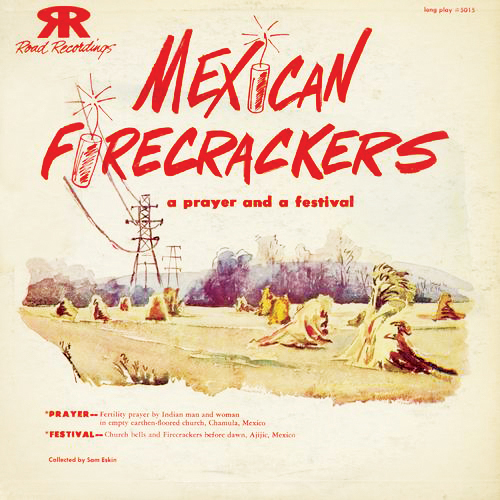
As with many erstwhile colonies reborn as independent countries in those years, the euphoria of sovereignty gave way to the workaday realities of being a little nation, and the more idealistic hopes of leftists like James—including the long-cherished aim of seeing all the Anglo West Indies form a single federated nation—crashed under the staid leadership of Eric Williams. By the early ’60s, Emory Cook’s ears, in any case, had begun to lead him elsewhere. Back in the U.S., Cook ceased recording for profit, choosing instead to focus on the engineering side of his business. Recording fashions were also changing. Studio-centric recording ideas like Phil Spector’s “wall of sound” were in the ascendancy. The Edisonian ideal of “pure,” sterile recordings was on its way to making a grand return, along with the rise of overdubbing and producer-driven pop, with the “isolation rooms” of the 1970s. The legacies of the high-fidelity craze Cook had done so much to shape, though, were plainly audible in the established dominance of stereo recording, in the omnipresence of “sound” and “acoustics” in the way music mavens appraised the records they loved, and in the emergent popularity of “live” LPs. (The first such record to become a big hit—Belafonte at Carnegie Hall [1959]—would have been inconceivable without Cook’s influence. The recording of Belafonte at Carnegie Hall—with its “aural presence of Belafonte moving about the stage, the palpable placement of instruments, and the aura of being in the audience, at a distance from the stage, immersed in the noises of the crowd”—was supervised by Cook’s longtime lieutenant, Bob Bollard, and is still cherished by audiophiles as an unexcelled example of “concert hall realism.”) Throughout the 1970s and into the ’80s, Cook Labs built high-end amplifiers and dubbing equipment, and maintained a pressing plant for fabricating others’ records as well. In the ’80s, that side of Cook’s business enjoyed something of a resurgence when hip-hop impresarios from just down I-95 in New York began sending him tapes they needed pressed on 12-inch discs; Cook eventually sold his plant to a group of these new clients. He died of emphysema, after a long hospitalization, in 2002.
Last spring, in Port of Spain, I wandered downtown to see if I could find Cook’s old headquarters. A few days before, during carnival, the city’s sun-baked streets had resounded with soca music booming from great stacks of speakers loaded onto flatbed trucks and drowning out anything so subtly “present” as the shuffling of feet. Port of Spain’s downtown has changed a lot over the years; where colonial-era buildings with cast-iron balconies once stood, glass-walled office buildings house the bankers and businessmen who oversee the island’s petro-economy. Some of the old buildings still stand, among them the Red House by Woodbrook Square, overseen, as of a couple years’ ago, by Kamla Persad-Bissessar, the Indian woman whose historic ascension to prime minister pushed the corrupted PNM from power. A few blocks away, at 26 Sackville Street, wedged between a car park and concrete office building, I was glad to find the small warehouse where Emory Cook once pressed the records that helped forge the nation’s sense of itself in sound. Today, the building houses a yoga center.
I stopped in to see Bruce Procope, whose office was a few blocks away. I was glad to find that he was still there. He told me about how, after Belafonte had made a hit with “Mama Look a Boo Boo,” he’d helped Melody recoup his rightful royalties. I asked Procope about the end of Cook Caribbean’s run. He told me that the expiry of the Pioneer Industry Act, in 1961, had doomed the firm’s prospects as a going concern. Procope kept things going for a few years, but with Cook spending less and less time in Trinidad, they’d folded the company for good in 1964. By the end of their association together, Cook was spending a lot of time in Brazil, and working on some hazy Pentagon project—“very hush-hush, you understand”—called “white sounds.”
When Cook sold what remained of his U.S. business, in the 1980s, he’d called Procope to say he wanted to send all his Trinidad records and masters to the island where he’d made them. Procope told him it was a bad idea. Cook was insistent that Trinidad was where they belonged. “Well, I’ll do my damndest to dissuade you,” Procope told him. “We don’t have the facilities here; the material will be ruined—send it someplace that can preserve it properly.” Cook eventually relented, which is why his greatest legacies, whatever the results and aims of that “white sounds” project locked away at the Pentagon, now reside across the Potomac at the Smithsonian. The Emory and Martha Cook Collection includes Cook’s papers and the masters to all his records, along with some cutting-head parts, even a plastic bag of powdered vinyl. As a condition of Cook’s gift, Smithsonian Folkways promised to remaster and make available in digital form all his out-of-print records. These recently reissued recordings are essential listening for students of the American record industry, and of the “world of the ear” everywhere. But nowhere do they retain such resonance as they do among Trinidadians, as I was reminded the weekend after I saw Procope, by a man who stepped out in Port of Spain on V.E. Day in 1945, and who stands as a living icon of Trinidad’s steel-band movement.
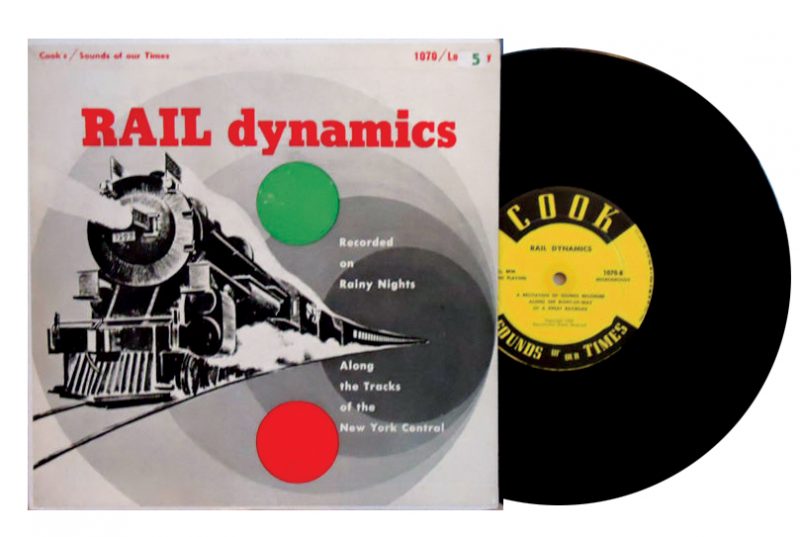
I found Junior Telfer on his cool verandah, high above the city in the lush hills that surround Port of Spain. Telfer, a slim man with copper brown skin and eighty-something carnival seasons under his belt, was quietly recovering from the festivities. Last year, as for most of the last several, he stepped out as the literal flag-waver for a mighty steel band known as Phase II (his oblique explanation of their name: “We’re way beyond Phase I, of course”). It was past noon, but Telfer had just begun his day; he’d been up till the wee hours, he said, “watching the cricket.” He was still dressed impeccably, in the uniform he’s worn each day for decades: a red turban, along with a white cotton tunic and tailored black pants. The ensemble combines to make him a walking Trinidadian flag, but also conveys, as he reminded me, a piquant personal symbology: red “for living with passion,” white “for a pure heart,” and black because “from here down, it’s… pure niggerdom.” Leaning back in his chair, Telfer opened a holster-like metal case he keeps affixed to his belt, and pulled from it a thin white spliff. I thought of Derek Walcott’s poem about this place and its people’s theatric ways: “All of Port of Spain is a 12:30 show.” Telfer lit his spliff.
I pulled out the Smithsonian’s new reissue of Cook Caribbean’s Jump Up Carnival, and slipped it into his stereo. The clock struck six; the rooster crowed; the sound of an approaching steel band filled the air. “It’s Invaders!” Telfer exclaimed. “Playing ‘Back Bay Shuffle.’ I’ll never forget it.” His verandah became the street on the recording. “Listen! The shuffling of feet! No one before or after has captured, on record, what it feels like to be out with a steel band on the street—where the music was born, where we belong.” His grin was beatific. “Listen!”

